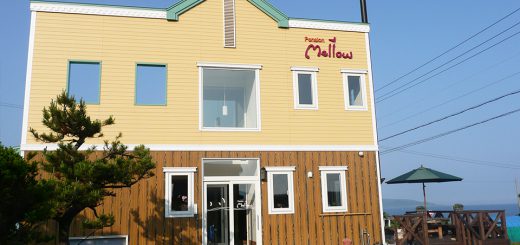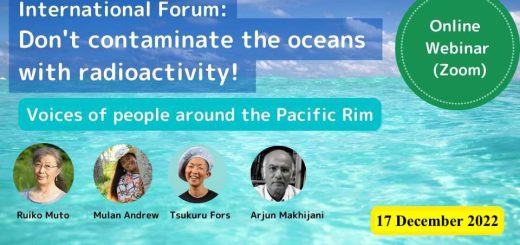METI and NUMO’s Fiasco
By Nishio Baku
Mayor Kataoka Haruo of Suttsu Town, Hokkaido submitted paperwork as an application for a “literature review”—which constitutes the entryway for selection of sites for geological disposal of high-level radioactive wastes (HLW)—to the Nuclear Waste Management Organization (NUMO) of Japan on October 9th. On the same day, Mayor Takahashi Masayuki of Kamoenai Village, Hokkaido received a letter of proposal from Ozawa Noriaki, Senior Coordinator in charge of Energy and Local Policy Integration for the Agency of Natural Resources and Energy proposing this “literature review” in the name of the Minister of Economics, Trade and Industry. The mayor announced his acceptance of the proposal at a village assembly meeting that day, and submitted his letter of acceptance by post on the 15th.
With the two forms of initiating “literature review” (public solicitation and letters of proposal) each constituting a first step, both the Ministry of Economy, Trade and Industry (METI) and NUMO appear at first glance to have achieved a great success, and they themselves may be proud of their outstanding job. Is this really the case though? Rather, shouldn’t they be seeing it as a defeat?
Mayor Kataoka of Suttsu Town is disregarding a demand to establish a public referendum ordinance brought by townspeople groups with four times the number of officially needed signatures. He took the plunge and filed the application in response to the solicitation saying that he had a feeling that he could obtain majority agreement. In this, METI and NUMO failed to learn the lesson of Toyo Town Mayor Tashima Yasuoki in Kochi Prefecture who, in 2007, filed a similar application under his own initiative, leading to a recall election that he lost, forcing him to resign, with his application subsequently withdrawn (see NIT No. 118). Allowing this arbitrary action by a local leader demonstrated to the whole world once again how irrational the process of choosing disposal sites is.
Moreover, although Kamoenai Village Mayor Takahashi’s acceptance came after adoption of the petition for application by the village assembly, it has now been shown, by creating a case of immediate adoption of a proposal, that this proposal method also fails to respect citizens’ wishes.
It is a huge mistake by METI indeed, to have Kamoenai Village be the first district thus propositioned. People ask why that municipality was propositioned instead of any of Japan’s other 1700-plus cities, towns and villages. An explanation is sought as to why, of all things, a district was chosen that is completely unsuitable according to the government’s own geoscientific characteristics map (see NIT No. 180). After propositioning Kamoenai Village’s mayor, Mr. Ozawa told the press, “Regular activities to promote understanding have been expanding, such as the petition adopted by the village assembly, so I thought it would be a good time to make the proposal.” What is the point of having a “geoscientific characteristics map” if it is simply the places willing to accept the waste that are to be promoted as “suitable areas”? METI has also made a mess of explaining the so-called “literature review.” In response to movements in Suttsu Town and Kamoenai Village, on September 11, METI posted “What is the ‘Literature Review’ for when a district is chosen as a final disposal site?” under “Special Contents” on the Agency of Natural Resources and Energy page at its website. This is how it reads. “If there are cities, towns or villages expressing concerns about final disposal projects, documents and data at the national scale and more locally relevant documents and data pertaining to the district will be investigated, analyzed and then presented to provide references useful in promoting discussions by the residents of these cities, towns and villages regarding geological disposal projects. This step is called “literature review,” and is part of so-called dialog activities.”
Thus it has morphed from an investigation for NUMO to an investigation for edification of the cities, towns and villages. The October 7th edition of Hokkaido Shimbun reported this as “maybe aimed at lowering the hurdles for application,” but the probable truth is they are taking a defiant attitude preemptively to having their dubious use of the term “investigation” exposed.
The future may see further attempts to promote this “literature review.” That, however, would only add further confusion to the situation and be nothing but a hindrance to resolving the issue properly. Now more than ever, what is needed is to stop where we are and hold a major discussion to get back to basics.


